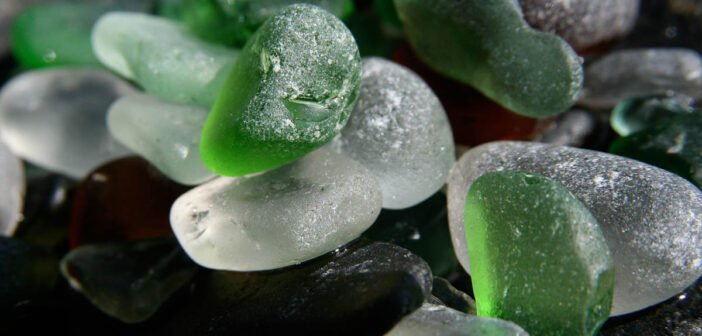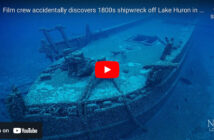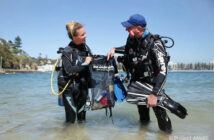Sea glass is naturally weathered glass that has the appearance of tumbled stones. Sea glass is weathered glass found on beaches near bodies of salt water that has been physically and chemically weathered. Natural frosted glass is created as a result of these weathering processes. Sea glass is commonly used for decoration, most notably in jewellery. “Beach glass” is made from fresh water and appears less frosted than sea glass. Sea glass takes 20-40 years, and sometimes up to 100-200 years, to develop its distinctive texture and shape. The smooth edges are formed by the longshore drift process, which is also known as drift glass. Both terms are used interchangeably in practice.
Sea glass begins as ordinary shards of broken glass that are tumbled and ground repeatedly until the sharp edges are smoothed and rounded. Over time, the glass loses its slick surface but gains a frosted appearance as a result of this process.
Naturally produced sea glass (“genuine sea glass”) is made up of pieces of glass from broken bottles, broken tableware, or even shipwrecks that have been rolled and tumbled in the ocean for years until all of the edges have been rounded off and the slickness of the glass has worn to a frosted appearance. The glass will then wash to shore, where it can be collected.
The original source of sea glass determines its colour, and most sea glass comes from bottles. Aside from glass, coloured sea pottery is frequently discovered.
Kelly green, brown, white, and clear sea glass are the most common colours. These colours are primarily derived from glass bottles, which are commonly used by companies that sell beer, juice, soft drinks, and other beverages. Clear or white glass can be found in clear plates and glasses, windshields, windows, and a variety of other places.
Jade, amber (from bottles for whisky, medicine, spirits, and early bleach bottles), golden amber or amberina (mostly used for spirit bottles), lime green (from soda bottles during the 1960s), forest green, and ice- or soft blue (from soda bottles, medicine bottles, ink bottles, and fruit jars from the late 19th and early 20th centuries, windows, and windshields) are among the less common colours. These colours appear about once every 25 to 100 pieces of sea glass discovered.
A type of green sea glass that comes primarily from early to mid-1900s Coca-Cola, Dr Pepper, and RC Cola bottles, as well as beer bottles, is unusual. Bottles used for ink, fruit, and baking soda could have soft green colours. These colours appear once every 50 to 100 pieces.
Citron, opaque white (from milk bottles), cobalt and cornflower blue (from early Milk of Magnesia bottles, poison bottles, artwork, Bromo-Seltzer and Vicks VapoRub containers), and aqua (from Ball Mason jars and certain 19th century glass bottles) are all very rare. These colours appear once every 200 to 1,000 pieces discovered.
Grey, pink (often from Great Depression-era plates), teal (often from Mateus wine bottles), black (older, very dark olive green glass), yellow (often from 1930s Vaseline containers), turquoise (from tableware and art glass), red (often from old Schlitz bottles, car tail lights, dinnerware, or nautical lights, it is found once in about 5,000 pieces), and orange (the least common type of sea glass, found once in about 10,000 pieces) are extremely rare colours. These colours appear once every 1,000 to 10,000 pieces gathered. Some black glass shards are quite old, having come from thick eighteenth-century gin, beer, and wine bottles.









